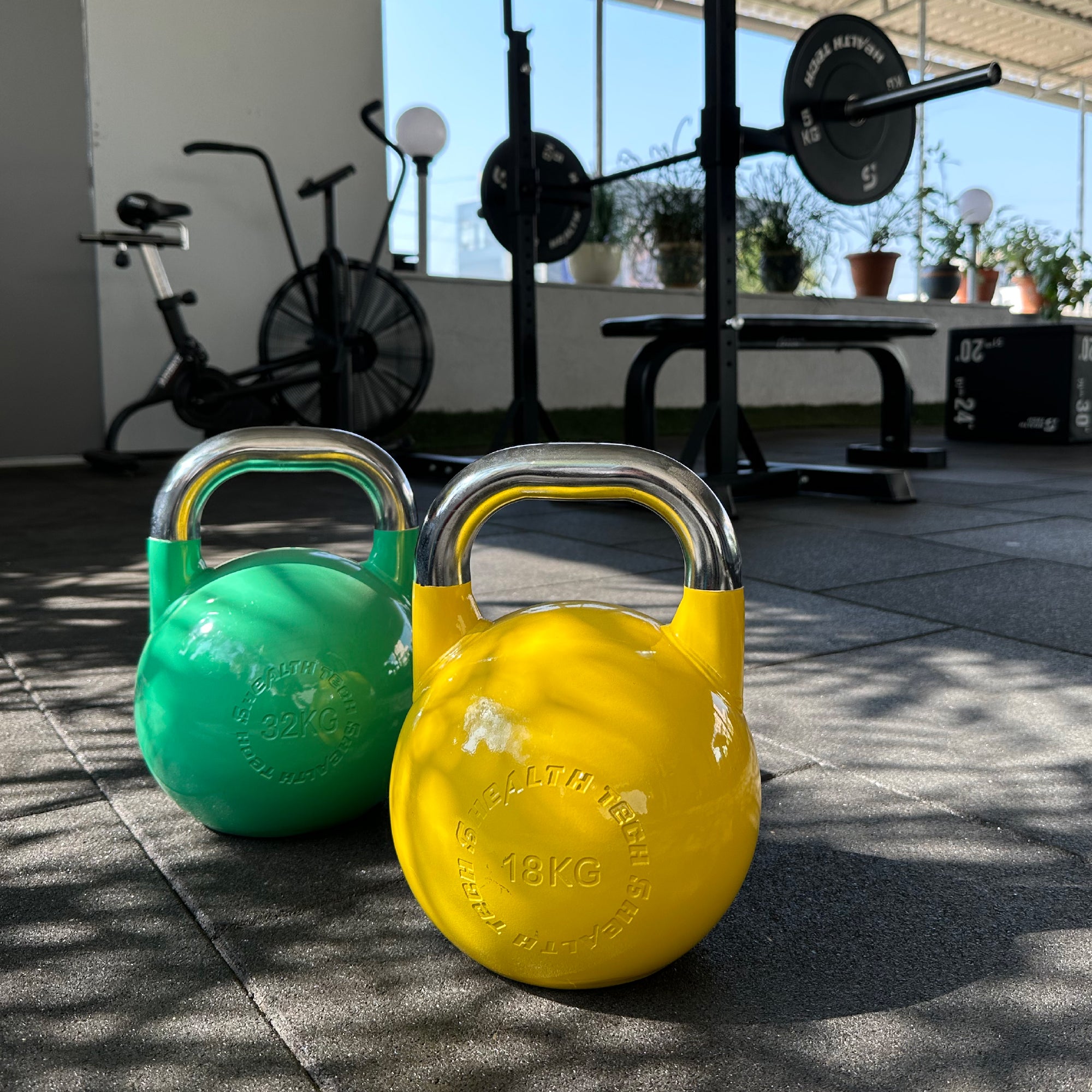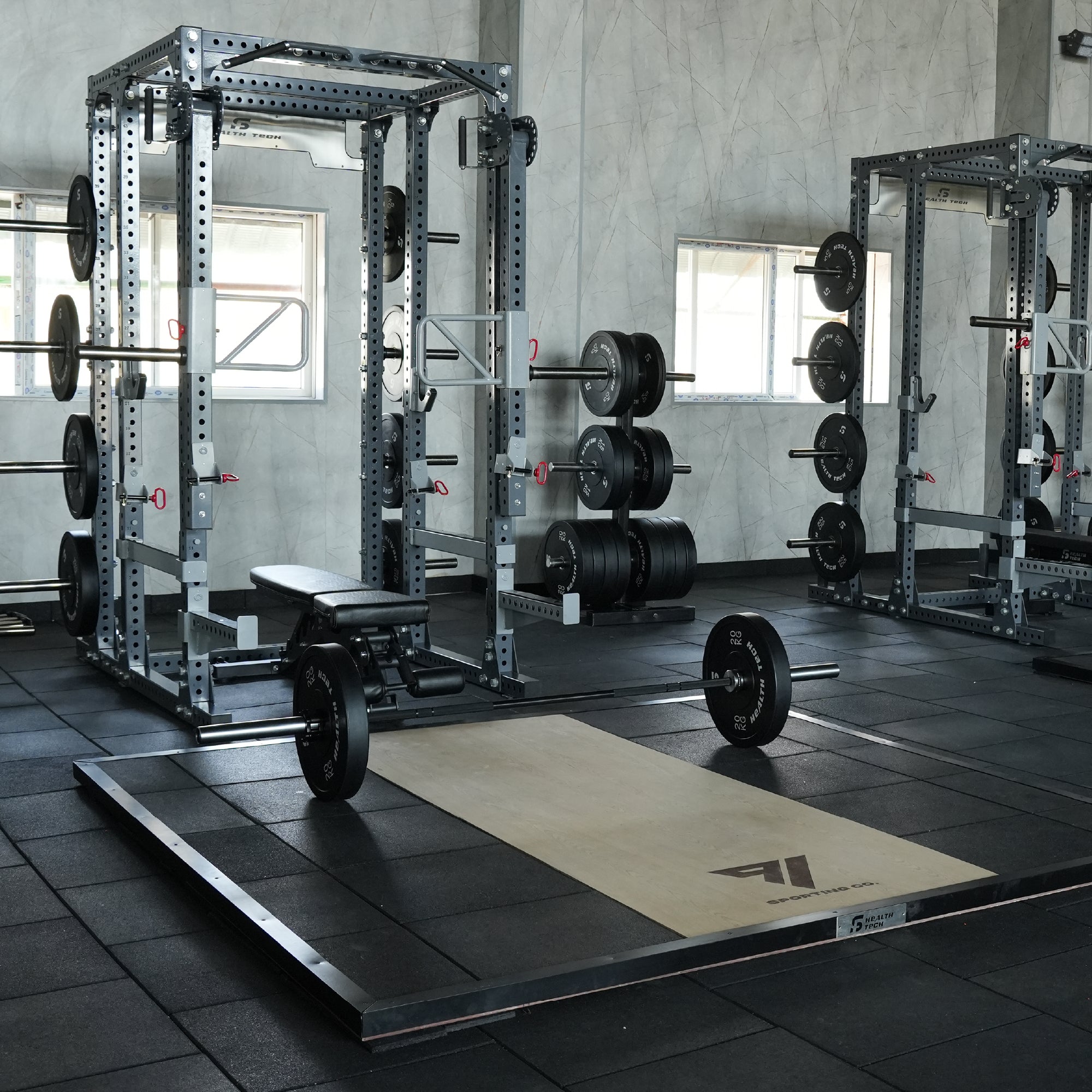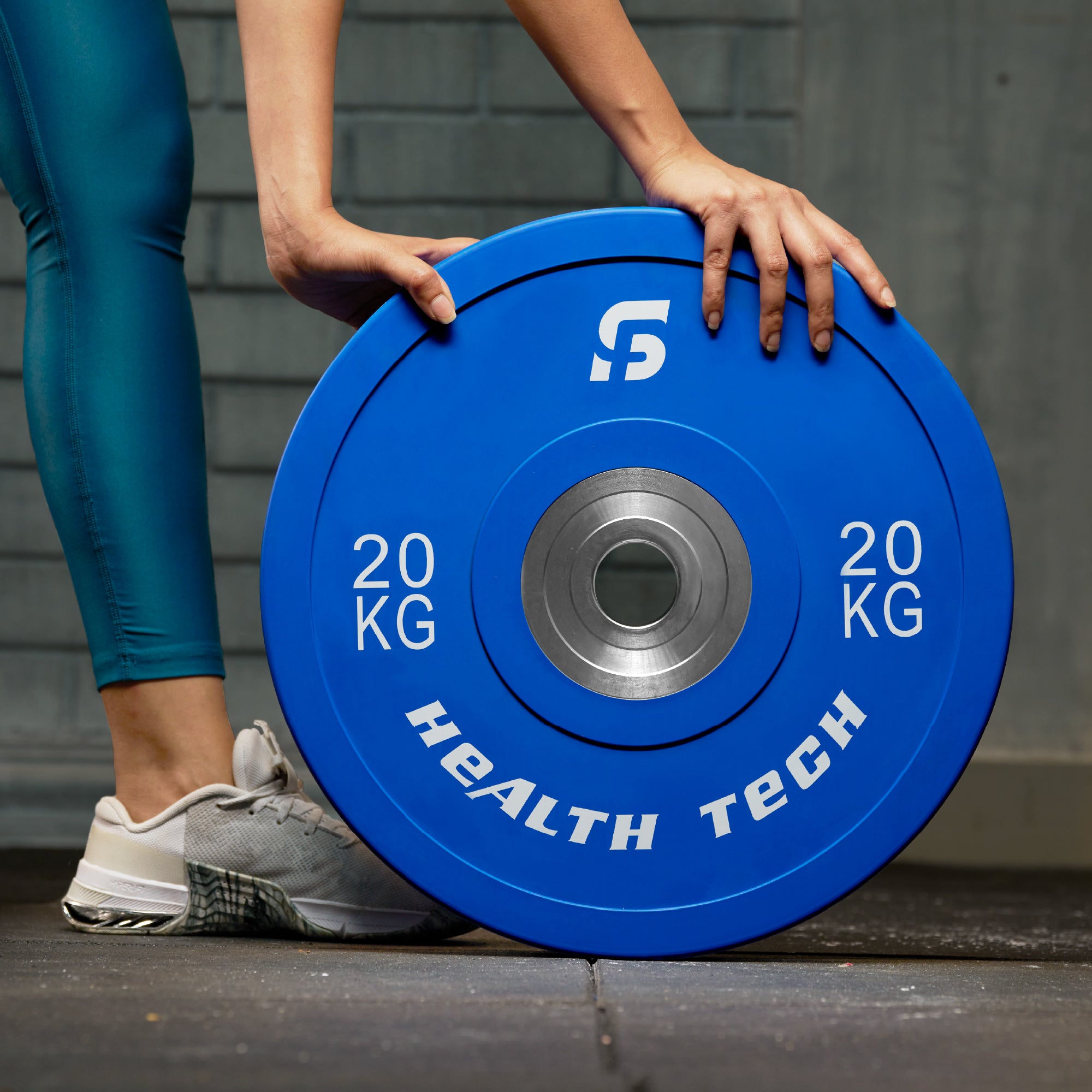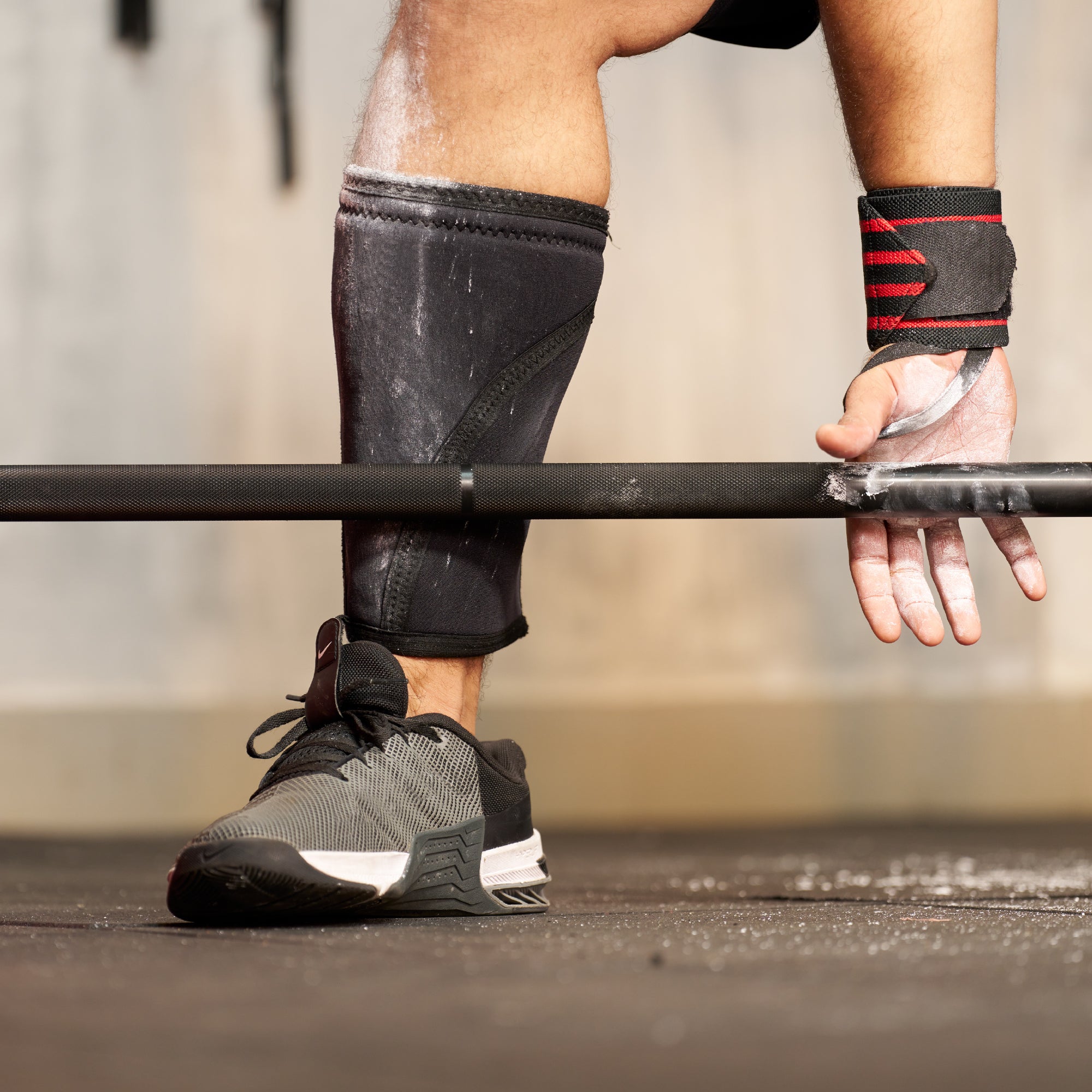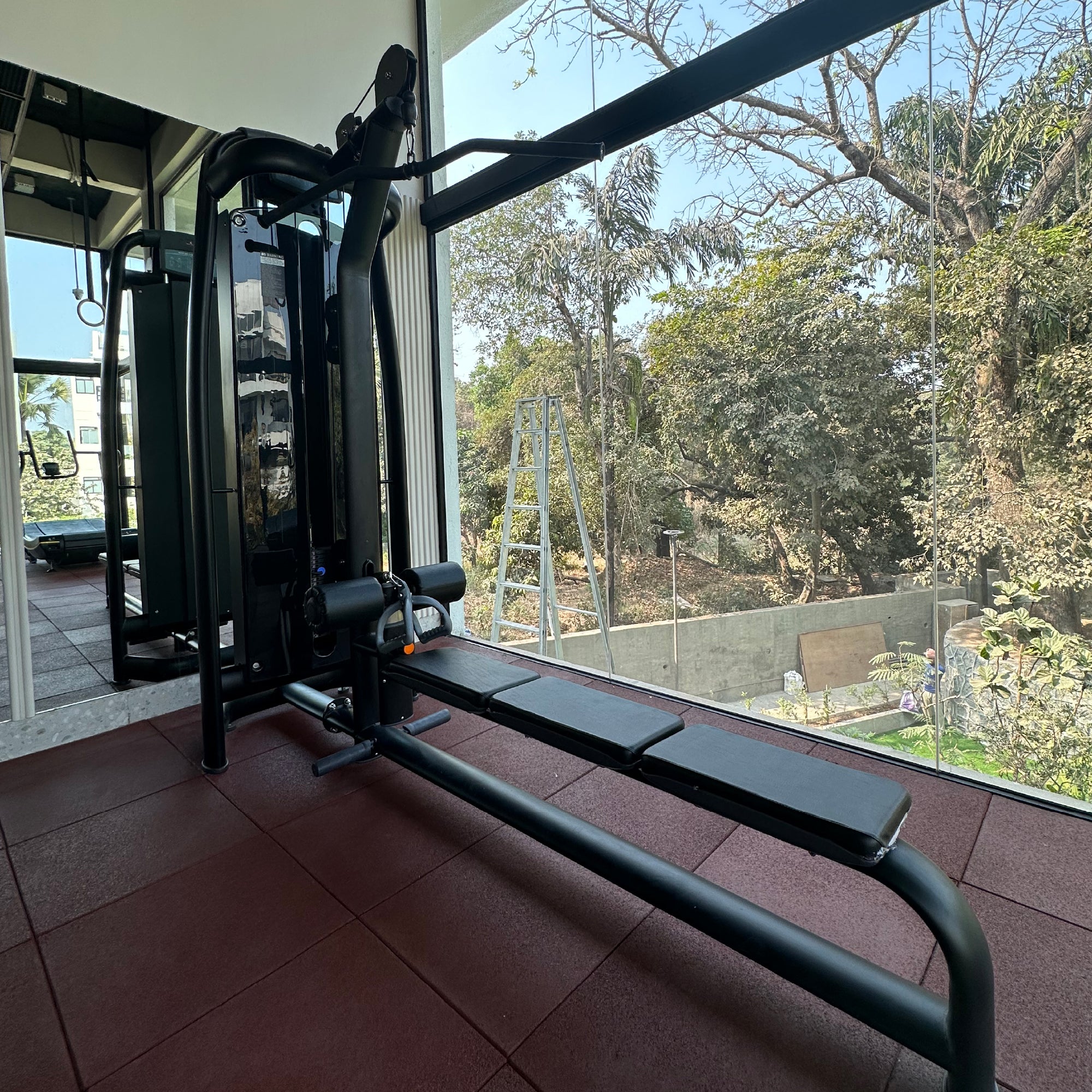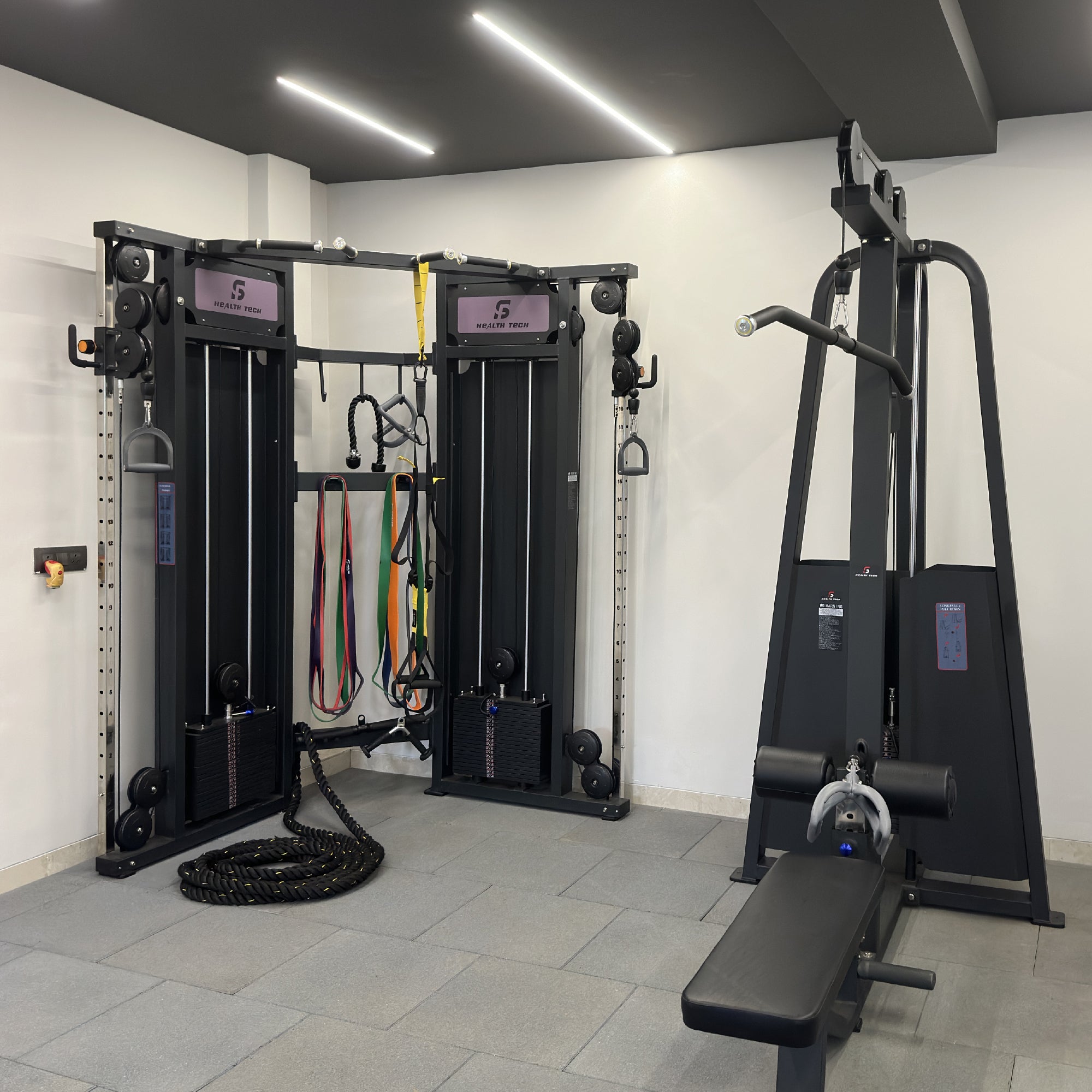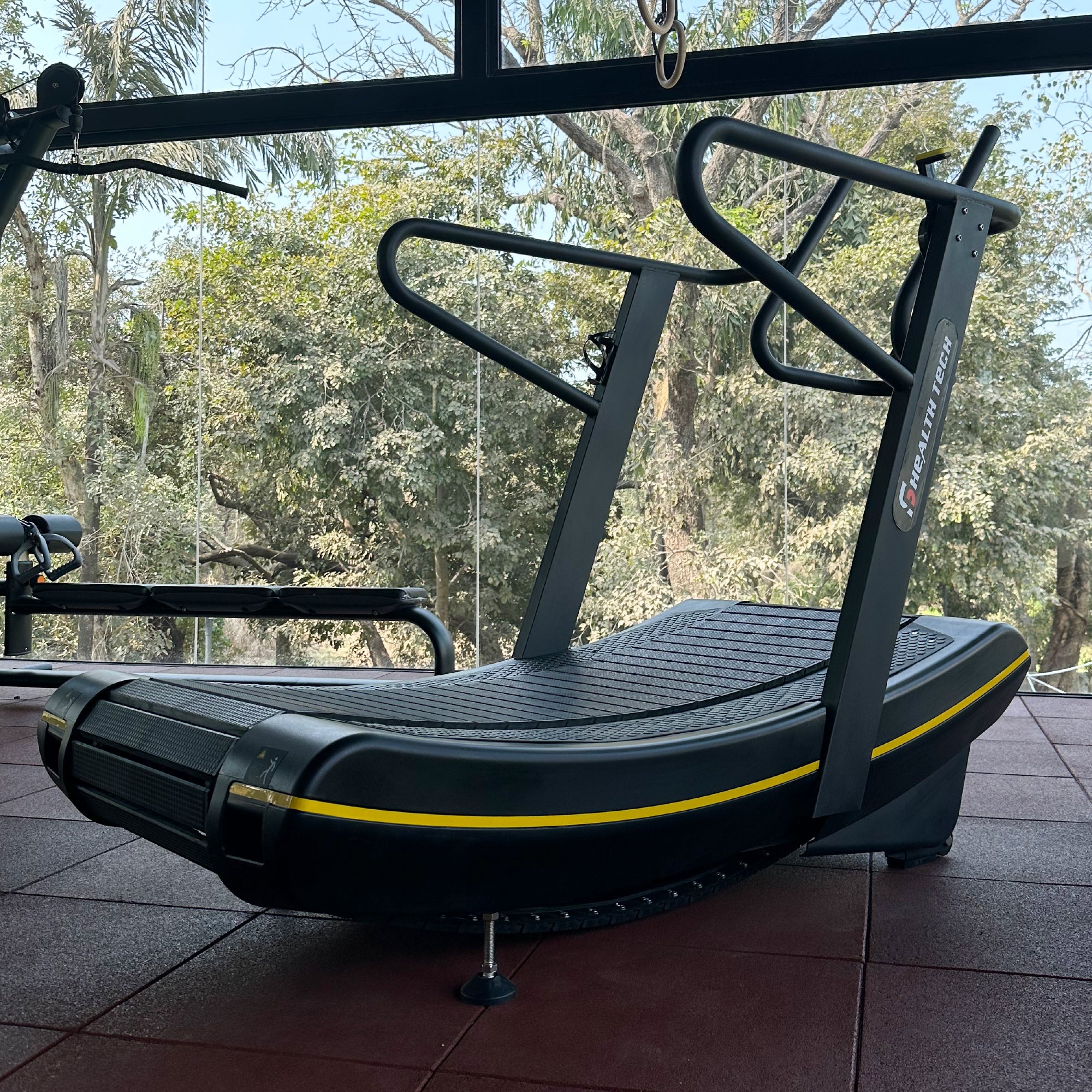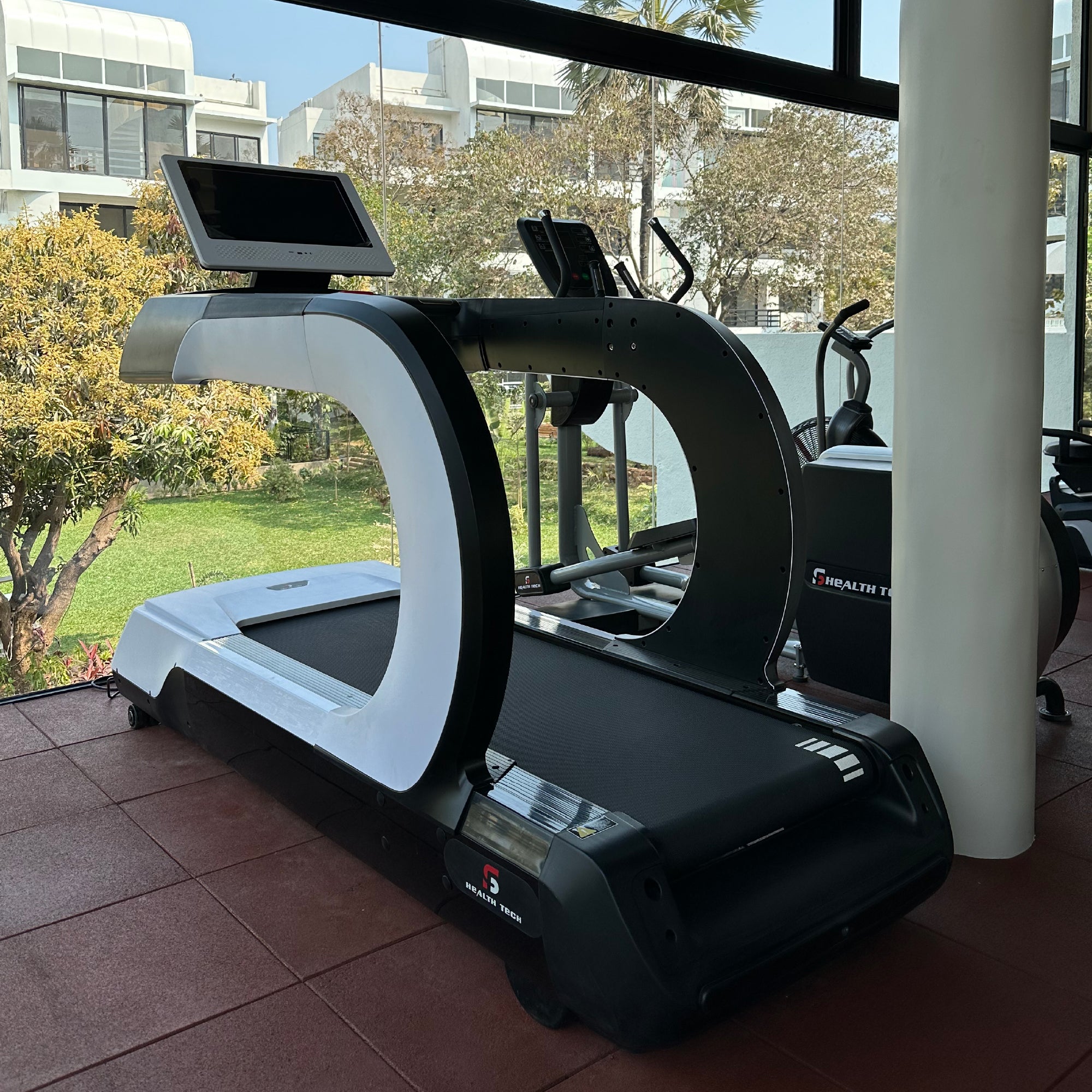Best Dumbbell Exercises for Abs and Core Strength

Building a strong core is crucial for overall fitness, and integrating dumbbell exercises can greatly amplify your progress. Dumbbells provide a versatile and effective solution for various fitness goals, from reducing belly fat to enhancing aesthetics and overall strength. In this article, we'll delve into the top dumbbell exercises for abs and core strength, ideal for your fitness journey.
Why Target Your Core with Dumbbells?
Dumbbell ab workouts offer added benefits compared to bodyweight exercises, intensifying muscle engagement for better growth and definition. They enhance core stability, posture, and balance. Strengthen your core with versatile dumbbell exercises for various fitness goals, including reducing belly fat and enhancing overall strength. A strong core not only tones abs but also improves stability, posture, and injury prevention, crucial for daily and athletic movements.
Equipment Required:


Best Dumbbell Exercises for Abs and Core
1. Plank Row
The plank row is a fantastic exercise that strengthens your back muscles, particularly your mid and upper back. It also works your core for stability, making it a great all-around move.
-
How to Do It:
- Place your left hand on a 6-8” step or box in a one-arm plank position.
- Push the box away with your left arm for stability and neutral spine alignment.
- Grab a dumbbell with your right hand.
- Perform a one-arm row by retracting your shoulder and pulling the dumbbell to your chest.
- Lower the dumbbell back to the starting position.
- Repeat for the desired repetitions, then switch sides.
-
Benefits:
- Enhances shoulder stability.
- Improves torso stability under anti-rotational load.
- Strengthens the back muscles, particularly the latissimus dorsi and rhomboids.
- Engages the core for overall stability and balance.
2. Russian Twist
The dumbbell Russian twist is a core exercise that primarily targets your obliques, the muscles on the sides of your abs. It also engages your rectus abdominis (six-pack) and helps stabilize your spine.
-
How to Do It:
- Sit with knees bent and heels on the ground, leaning slightly back.
- Hold a dumbbell with both hands, arms straight in front.
- Rotate your torso to the right, touching the dumbbell to the ground.
- Rotate to the left, touching the dumbbell to the other side.
- Aim for 10 repetitions on each side.
-
Benefits:
- Targets the oblique muscles.
- Enhances rotational strength.
- Improves core stability.
- Adds variety to your core training routine.
3. Dumbbell Side Bend
Dumbbell side bends are a core exercise that primarily targets your obliques, the muscles along your sides that help with rotation and bending. They can also improve your overall core strength and stability.
-
How to Do It:
- Hold a dumbbell overhead with your right hand.
- Place your left hand on your hip or alongside your body.
- Bend to the left side, stretching your right oblique.
- Pause for a few seconds.
- Straighten back to the starting position.
- Repeat on the opposite side.
-
Benefits:
- Strengthens the obliques.
- Enhances flexibility in the lateral muscles of the torso.
- Improves core stability.
- Helps with overall balance and coordination.
4. Dumbbell Sit-Ups
Dumbbell sit-ups challenge your core, especially your rectus abdominis (the six-pack muscle). They also engage your hips and obliques for stability during the movement.
-
How to Do It:
- Lie on your back with knees bent and feet near your hips.
- Hold a dumbbell against your chest.
- Engage your core and lift your upper body towards your knees.
- Pause at the top.
- Slowly lower back down.
- For an easier version, perform crunches instead of full sit-ups.
-
Benefits:
- Strengthens the abdominal muscles.
- Enhances core stability.
- Improves overall core strength.
- Provides a more challenging variation to traditional sit-ups.
5. Dumbbell T-Push Up
The Dumbbell T-Push-Up is a challenging variation that combines a push-up with a side plank rotation. It primarily targets your chest, but also works your core, shoulders, and triceps for a full upper-body workout.
-
How to Do It:
- Start in a push-up position with hands-on light dumbbells.
- Lower your body to the ground to perform a push-up.
- As you push back up, lift and rotate your right arm until it forms a "T" shape with your body.
- Bring your arm back down to the starting position.
- Repeat the same movement on the left side.
- Aim for 10 repetitions on each side.
-
Benefits:
- Strengthens and stretches the obliques.
- Provides all the benefits of a standard push-up.
- Improves upper body strength.
- Enhances coordination and balance.
6. Single-Leg Romanian Deadlift
The single-leg Romanian Deadlift strengthens your core by forcing it to stabilize your spine as you balance on one leg and hinge at the hips. This isometric core engagement helps improve overall core strength and stability.
-
How to Do It:
- Stand on your right foot.
- Hold a dumbbell in your right hand.
- Lean forward, lowering the dumbbell as your left foot lifts behind you.
- Keep your back flat and raise your back foot for better balance.
- Return to the standing position.
- Aim for 10 repetitions on each side.
-
Benefits:
- Challenges abs and lower back for stability.
- Improves balance and coordination.
- Strengthens the hamstrings and glutes.
- Engages the core muscles.
7. Suitcase Crunch
The suitcase crunch is an exercise that works your obliques, the muscles on the sides of your torso. By twisting your body as you bring your elbow towards your knee, it mimics the motion of closing a suitcase.
-
How to Do It:
- Stand upright, holding a dumbbell in one hand.
- Walk 10 yards out and 10 yards back while maintaining a stable core.
- Switch the dumbbell to the other hand.
- Repeat the walk.
- Keep your shoulder blades back and down, and glutes engaged throughout.
- Aim for 20 repetitions in total.
-
Benefits:
- Strengthens the abs for stability.
- Enhances grip strength.
- Improves unilateral strength.
- Practical for real-life tasks involving carrying heavy objects with one hand.
8. Low-to-High Wood Chop
The dumbbell low-to-high wood chop strengthens your core, especially your obliques, as you rotate to bring the weight up from a low position to a high one. It also works your shoulders and hips for a full-body challenge.
-
How to Do It:
- Stand with feet shoulder-width apart, holding a dumbbell with both hands near your right hip.
- Bend your knees slightly and engage your core.
- In one motion, rotate your torso and lift the dumbbell diagonally across your body to above your left shoulder.
- Straighten your legs as you twist, keeping your arms extended.
- Slowly reverse the motion to return to the starting position.
- Repeat for the desired repetitions.
- Switch sides and repeat.
-
Benefits:
- Enhances rotational strength and power.
- Engages the core muscles, including the obliques and rectus abdominis.
- Improves coordination and balance.
- Strengthens the shoulders, back, and legs.
- Mimics real-life movements, making it practical for daily activities and sports.
Transform your fitness journey with quality gym equipment tailored to your unique needs and goals. Explore SF HealthTech and discover the finest gym equipment.
Benefits of Abs Exercise
Engaging in abs exercises offers benefits beyond aesthetics, such as improved posture, better spinal alignment, and reduced back pain. Strengthening the core enhances stability and balance, making everyday movements easier and reducing injury risk during physical activities. Additionally, strong abs improve athletic performance by boosting power and agility. Visible abs often indicate overall fitness and well-being, resulting from regular exercise and a balanced diet.
Tips for Effective Results
- Go Easy on the Weights: Start with lighter weights to ensure proper form and technique, gradually increasing resistance as your strength improves. Overloading with heavy weights too soon can lead to injury and compromise effectiveness.
- Engage Your Core: Throughout each exercise, consciously activate your core muscles by pulling your navel towards your spine. This helps to stabilize your spine and pelvis, maximizing the effectiveness of the workout and reducing the risk of strain.
- Use Slow and Controlled Movements: Focus on the quality of each repetition rather than speed. Slow, controlled movements engage the muscles more effectively, ensuring they are properly stimulated and reducing the risk of injury from jerky motions.
- Maintain Good Posture: Keep your spine neutral and avoid arching or rounding your back. Proper posture not only targets the intended muscles more effectively but also prevents strain on other parts of the body.
- Don’t Forget to Breathe: Remember to breathe steadily throughout each exercise, inhaling during the eccentric phase (lengthening of the muscle) and exhaling during the concentric phase (shortening of the muscle). This ensures adequate oxygen supply to the muscles and helps maintain focus.
- Variety Is Key: Mix up your exercises regularly to prevent plateaus and keep your muscles challenged. Incorporate a variety of movements along with floor exercises on a yoga mat or abs mat targeting different areas of the abs for comprehensive development.
- Focus on Full Range of Motion: Aim to perform each exercise through its full range of motion, maximizing muscle engagement and flexibility. Avoid shortcuts or partial reps to ensure optimal results.
- Incorporate Progressive Overload: Continuously challenge your muscles by gradually increasing the resistance or intensity of your workouts over time. This progressive overload stimulates muscle growth and strength gains.
- Prioritize Consistency: Consistency is key to seeing results. Aim to incorporate abs exercises into your routine regularly, whether it's daily, every other day, or several times a week, to maintain progress and prevent regression.
- Allow for Adequate Recovery: Give your muscles time to rest and recover between workouts to prevent overtraining and promote muscle repair and growth. Adequate sleep, hydration, and nutrition are also essential for optimal recovery and results.
FAQs on Dumbbell Exercise for Abs and Strong Core
-
Can dumbbell exercises alone give me visible abs?
Dumbbell exercises can help strengthen and define abdominal muscles, but visible abs also require reducing body fat through diet and cardio. Incorporate a balanced routine including strength training, cardiovascular exercise, and a healthy diet for best results in revealing your abs.
-
Can beginners do dumbbell ab exercises?
Yes, beginners can do dumbbell ab exercises, but it's important to start with lighter weights and focus on proper form and technique. Beginner-friendly dumbbell ab exercises include weighted crunches, Russian twists with a lighter weight, and dumbbell side bends. Gradually increase the weight and intensity as strength and proficiency improve.
-
How often should I do dumbbell ab workouts?
For optimal results, aim to do dumbbell ab workouts 2-3 times per week, allowing for at least one day of rest between sessions to promote muscle recovery. However, listen to your body and adjust frequency based on your fitness level and recovery ability. Consistency is key, so stick to a regular schedule while ensuring adequate rest for optimal progress.
-
Are dumbbell ab exercises suitable for all fitness levels?
Yes, dumbbell ab exercises can be modified to accommodate all fitness levels, from beginners to advanced. Adjust weights and difficulty levels accordingly to suit individual abilities and goals.


